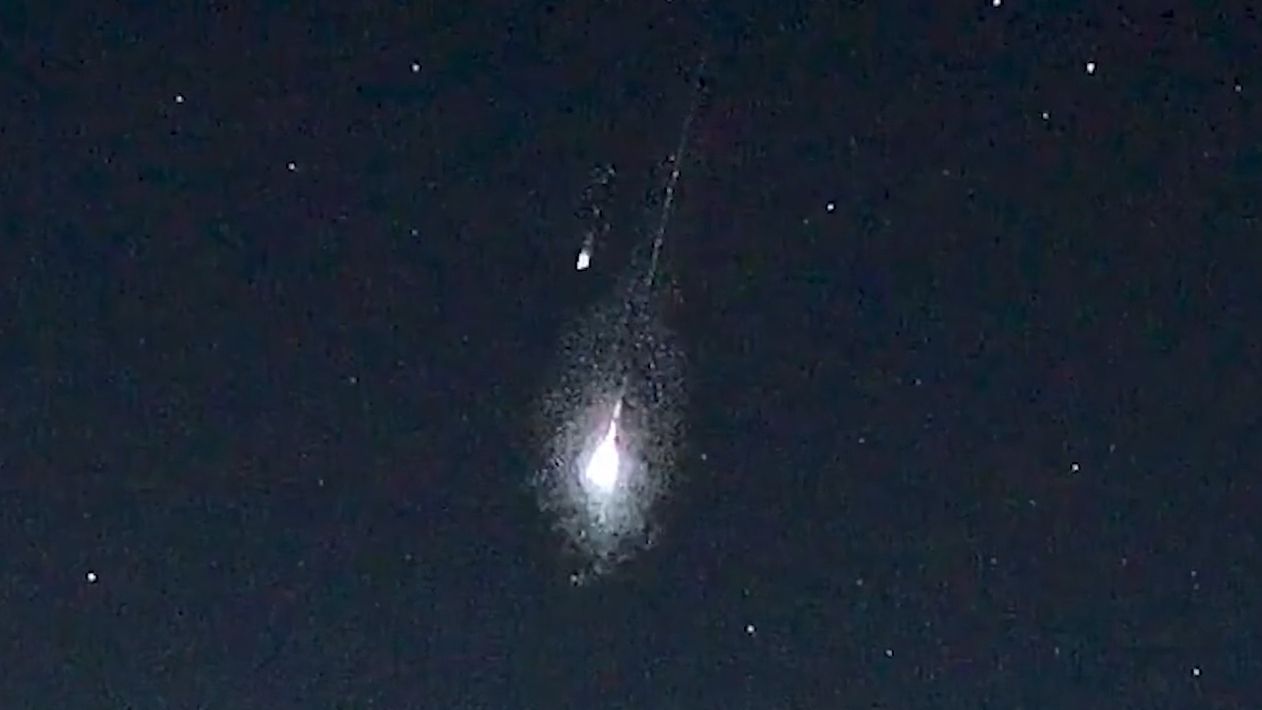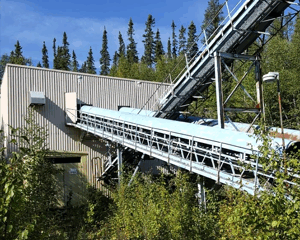Science
Dazzling ‘Fireball’ Event Sparks Curiosity Along U.S. East Coast

On the evening of October 16, 2023, spectators across several states on the U.S. East Coast were captivated by a bright green fireball that streaked through the night sky, illuminating the atmosphere with a stunning glow. The meteor left a brief yet brilliant trail before vanishing near the horizon. Adding to the spectacle, video footage from North Branford, Connecticut, appeared to show a second meteor moving synchronously alongside the fireball, disappearing simultaneously as they neared the earth’s surface.
This remarkable event was seemingly repeated the following night, October 17, with another fireball observed from a different vantage point in North Branford. Once again, a second meteor appeared to accompany the first, creating the impression of a rare ‘double fireball’ phenomenon.
To unravel this captivating spectacle, experts weighed in on the optical illusion that may be at play. According to fireball expert Robert Lunsford of the American Meteor Society, these occurrences might not be genuine double meteors, but rather artifacts caused by the camera systems used to capture the events.
Explaining the Optical Illusion
Lunsford explained that the cameras, which are fitted with anti-fogging measures and housed under clear acrylic domes, can produce misleading images of bright meteors. “These fireballs were captured by the same type of camera systems which are prone to produce ‘double fireballs’ on the brightest events,” Lunsford stated in an email to Space.com. He noted that the secondary fireballs were consistently positioned in relation to the main event in both videos, reinforcing the notion of an optical effect rather than a rare celestial occurrence.
This revelation prompts viewers to reconsider the dazzling videos of double fireballs circulating online. What may seem like a spectacular astronomical event could simply be a trick of the light, a phenomenon that has captivated both amateur and seasoned astronomers alike.
Capturing Meteor Events
For those interested in observing or documenting such celestial events, resources are available for enhancing astrophotography skills. Guides on photographing fast-moving meteors, alongside recommendations for the best lenses and cameras, can help enthusiasts capture their own stunning images of fireballs.
In an effort to foster community engagement, Space.com encourages readers to share their astrophotography. Anyone interested can submit their photos, along with comments and personal details, to [email protected].
The recent fireball events remind us of the beauty of our night sky, while also highlighting the importance of understanding the technology we use to observe it. As excitement continues to build around celestial phenomena, it is essential to distinguish between genuine astronomical events and the illusions that technology can sometimes create.
-

 Business1 week ago
Business1 week agoIconic Sand Dollar Social Club Listed for $3 Million in Folly Beach
-

 Health1 week ago
Health1 week agoPeptilogics Secures $78 Million to Combat Prosthetic Joint Infections
-

 Politics1 week ago
Politics1 week agoAfghan Refugee Detained by ICE After Asylum Hearing in New York
-

 Science1 week ago
Science1 week agoResearchers Achieve Fastest Genome Sequencing in Under Four Hours
-

 Lifestyle1 week ago
Lifestyle1 week agoJump for Good: San Clemente Pier Fundraiser Allows Legal Leaps
-

 Health1 week ago
Health1 week agoResearcher Uncovers Zika Virus Pathway to Placenta Using Nanotubes
-

 World1 week ago
World1 week agoUS Passport Ranks Drop Out of Top 10 for First Time Ever
-

 Entertainment1 week ago
Entertainment1 week agoJennifer Lopez Addresses A-Rod Split in Candid Interview
-

 World1 week ago
World1 week agoRegional Pilots’ Salaries Surge to Six Figures in 2025
-

 Top Stories6 days ago
Top Stories6 days agoChicago Symphony Orchestra Dazzles with Berlioz Under Mäkelä
-

 Science1 week ago
Science1 week agoMars Observed: Detailed Imaging Reveals Dust Avalanche Dynamics
-

 Business1 week ago
Business1 week agoMcEwen Inc. Secures Tartan Lake Gold Mine Through Acquisition









